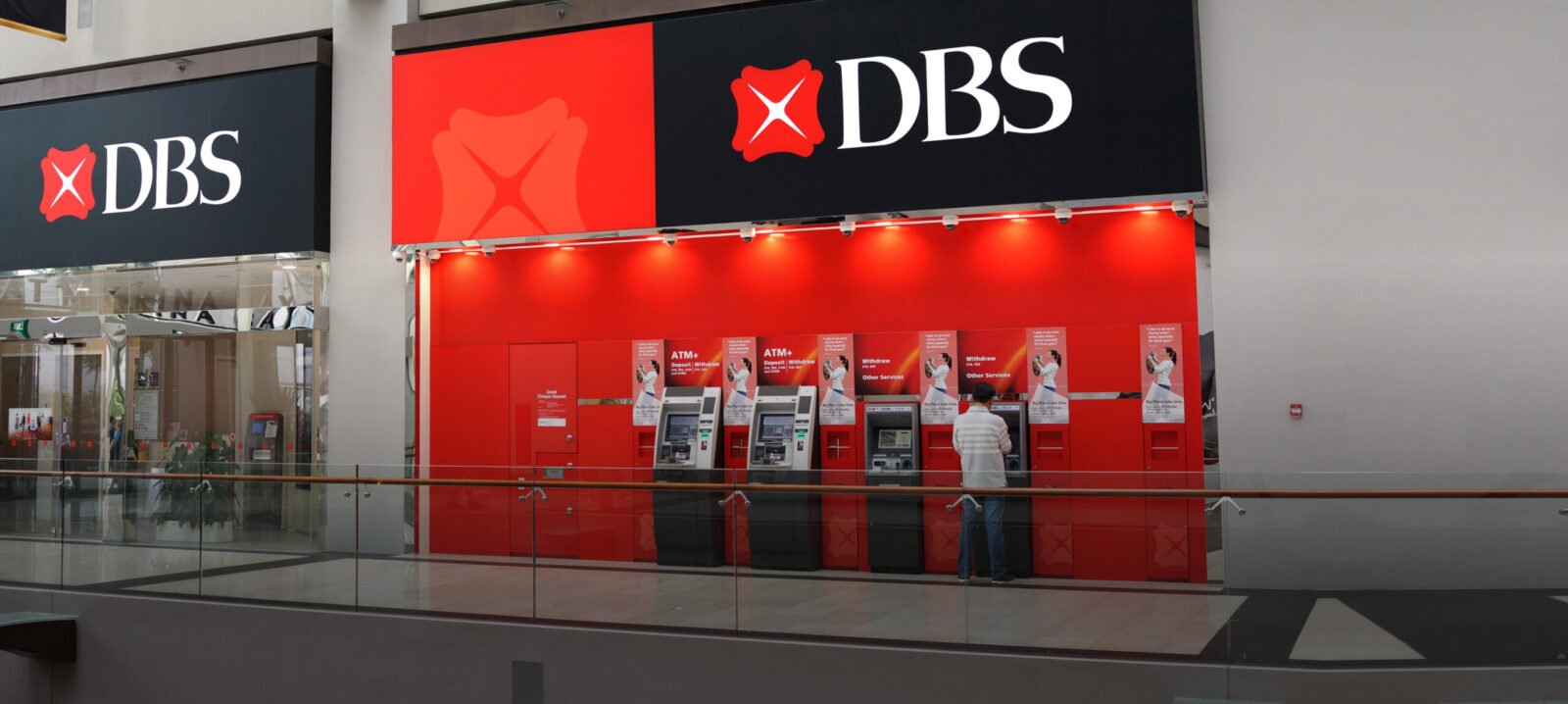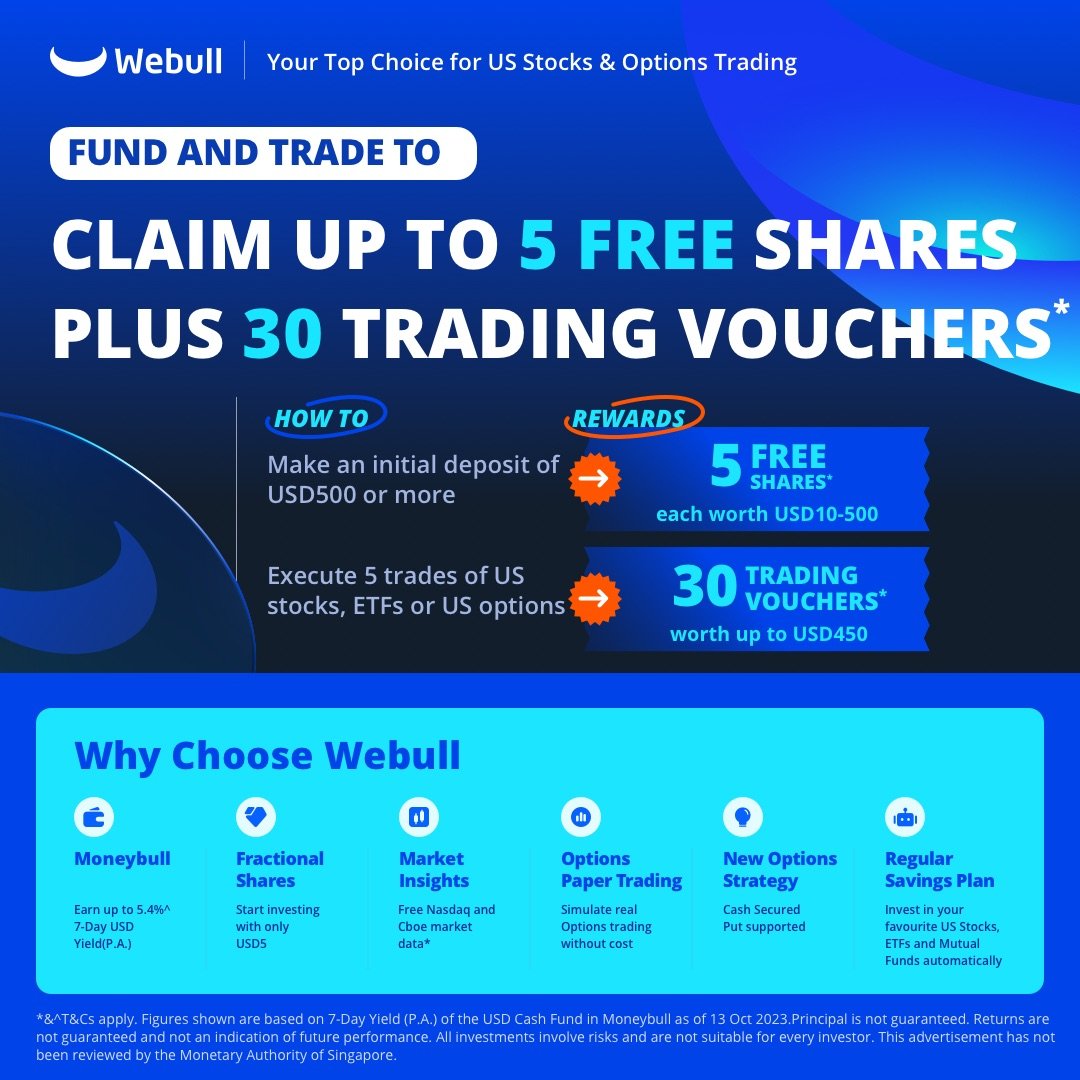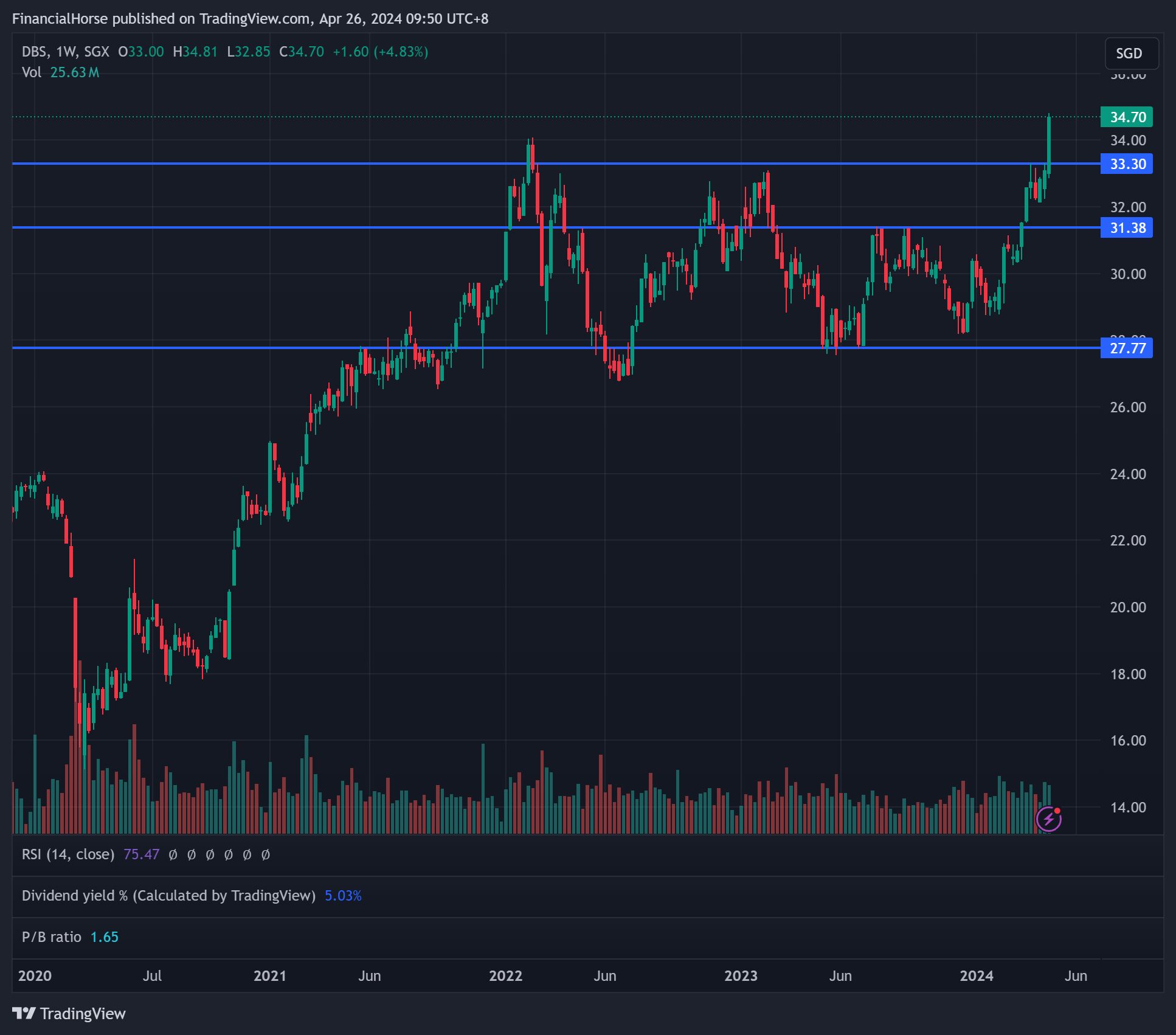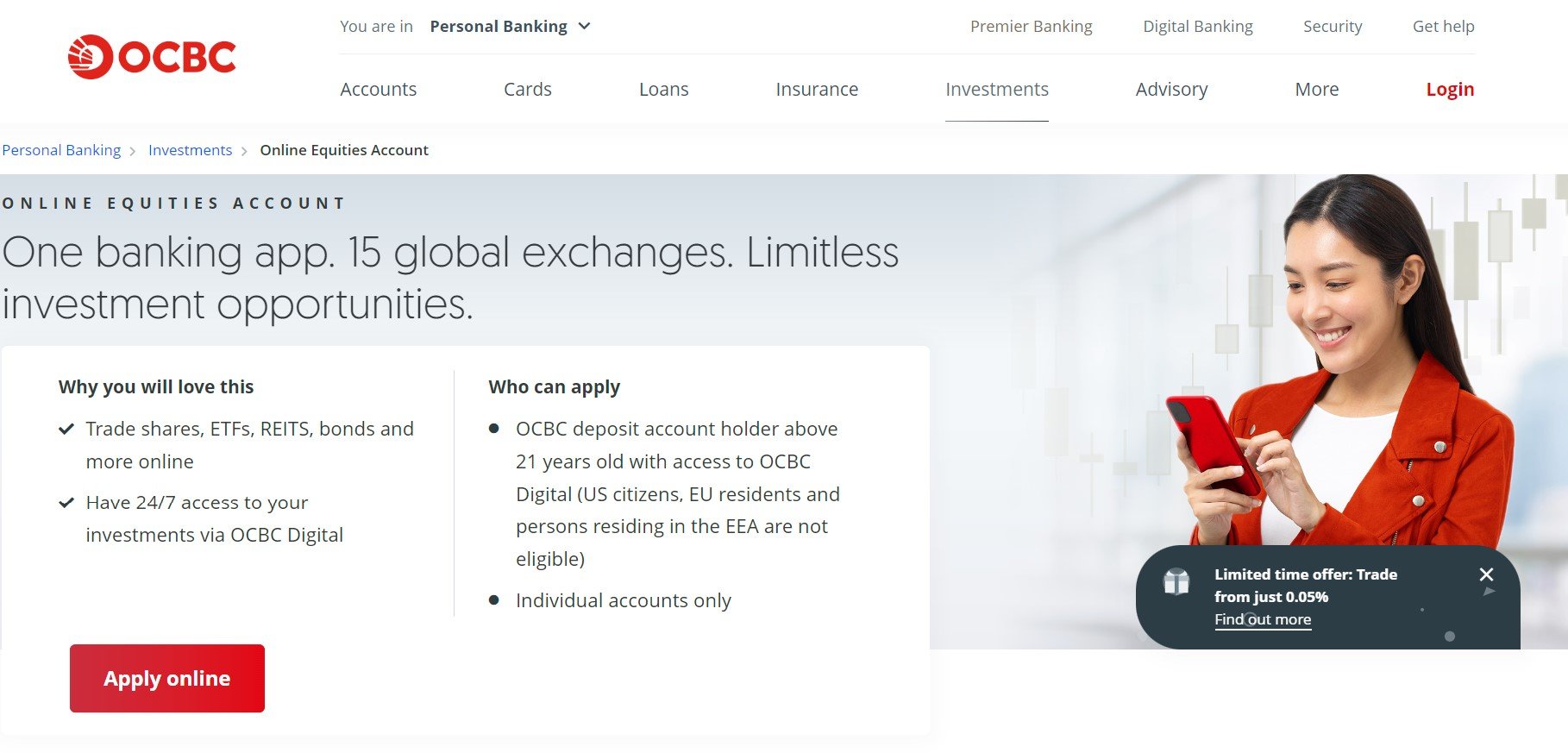As many of you will know, DBS bank went ex bonus shares on Monday, 22 April.
Interestingly, DBS shares have done very well since then.
Here is the price chart for DBS (after adjusting for bonus shares).
You can see the jump this week – hitting new all time highs at $34.79 (this would have translated into $38.3 pre-bonus shares).
At this price, DBS trades at a very pricey 1.65x book value.
And yet dividend yield remains very attractive at 6.2% – higher than most REITs.
So… DBS share price keeps going up, and it pays a higher dividend yield than most REITs.
Is it time to load up on more DBS shares, or is it time to play a reversal?

DBS Bank shares hit all time high after Bonus Shares – outperforming OCBC and UOB Bank
Here’s the daily chart of DBS Bank for reference.
Blue is OCBC and Orange is UOB.
You can also see how DBS has outperformed both OCBC and UOB significantly since mid 2023:
And this week in particular – after going ex bonus shares, DBS broke out of the recent trading range, hitting new all time highs:
DBS Bank pays a 6.2% Dividend Yield even after the rally – higher than most REITs
DBS Bank has committed to a $2.16 dividend per share.
With the latest share price of $34.79, that works out to a dividend yield of 6.2% - which is actually higher than most REITs.
Dividend payout ratio is only around 50%, so the dividend yield looks sustainable as long as there are no big interest rate cuts / recession (this is a big if I know).
So you can really see why investors are in love with DBS Bank over REITs right now.
You’re getting roughly the same dividend yield.
And yet DBS Bank share price keeps going up – while REIT prices look like this:
Is DBS Bank overvalued at this price?
That being said, after a fresh breakout to all time highs.
Is DBS Bank overvalued at this price?
Let’s take a look at some valuation metrics.
Price to Book Ratio of DBS Bank
The traditional metric for valuing banks is Price / Book.
Adjusted for bonus shares, DBS’s book value is $21.0.
At $34.79, that translates into a mind boggling 1.65x book value.
You can see the long term P/B chart since IPO for reference, where DBS bank trades today is definitely on the higher end of historical valuations:
What kind of capital gains is possible for DBS bank at this price?
Running some quick numbers:
- If DBS goes back to Jan 2023 high of 1.7x book value, that is 3.0% upside
- If DBS goes back to May 2007 high of 1.87x book value, that is 13.3% upside
Of course this excludes the dividend, so total return could be higher.
So going back to Jan 2023 highs isn’t really a lot of upside.
I suppose the question investors have to ask – will we see DBS go back to May 2007 valuations, or even higher?
Regime change for the bank stocks due to higher inflation environment?
That said, I know many investors think that historical numbers for banks are not relevant anymore.
For the simple reason that the past 20 years was a low inflation regime.
This meant that whenever you had an economic slowdown, interest rates were slashed to stimulate growth – hitting bank earnings.
Once you have higher inflation however, all that flips on its head.
With higher inflation, you cannot really slash interest rates to stimulate growth in an economic slowdown, as you risk reigniting inflation.
This requires a completely different approach to evaluating the banks.
In the past 20 years – you buy DBS Bank when dividend is high, sell DBS Bank when dividend is low
Let’s put it this way.
In the past 20 years, the best time to buy DBS was when the dividend yield was high, because that usually means the share price has plunged.
I’ve marked in the chart below all the peaks in DBS dividend yield – all coinciding with a drop in DBS share price, and a great buying opportunity:
Where we are today looks somewhat different.
DBS a month ago was trading as high as 7%+ dividend yield.
And yet the share price went on to hit fresh all time highs.
Long story short – yes, I agree with the argument that historical numbers for the banks are not accurate.
Inflation is a complete gamechanger for the banks (and for investing generally).
What happens next? Interest rates to stay high, or drop?
So we need to have some idea on the path for inflation (and consequently interest rates) going forward.
Latest US data is not pretty.
Set out below, you can see how:
- Economic growth is coming in below expectations
- Inflation is coming in above expectations

This is a stagflationary scenario – and nothing short of a complete disaster for the Feds.
Cut interest rates in this climate and watch inflation / stocks soar.
Don’t cut interest rates, and watch GDP weaken into an US election year.
Like I said, not pretty.
What is the market pricing in on interest rates?
Base case – market is pricing in only 1 interest rate cut in 2024.
While the market is now pricing in a 0.6% chance of a rate hike (which was considered blasphemy just 3 months ago).

It was only as recent as Jan this year when the market was pricing in 7 interest rate cuts in 2024, so that’s just a complete sea change.
Higher interest rates are good for banks (as long as the economy holds up), hence the strong performance for bank shares of late.
This has sent US 10 year interest rates well above 4.5% into the danger zone.
If this keeps up, we may touch the 2023 highs of 5.0%, which if you recall sparked a broad risk off in risk assets in 2023.

My personal view on inflation and interest rates?
Some of you have asked me where I see inflation 12 months from now.
The way I see it – the range of possibilities going forward is very high, and depends ultimately on how US policy makers (Yellen and Powell) react in a US election year.
If they ease monetary policy, I could well see inflation soaring, and risk assets from Bitcoin to Gold to stocks making new highs.
If they keep monetary policy tight, I could well see a broader economic slowdown, and big selloff in risk assets.
It really depends on how Yellen and Powell act in the next 6 – 12 months.
This being a US election year, I would be inclined to say they’re probably going to juice the economy in 2H 2024.
But can I rule out Powell wanting to cement his legacy as Paul Volcker 2.0 and keeping rates at 5.5% until inflation is crushed, even at the expense of a global economic slowdown?
Probably not.
The money this cycle has been made betting against the market
What I do know however.
Is that much of the money this cycle has been made betting against market expectations on interest rates.
In Oct 2023, when the market was expecting interest rates to stay high for longer, the money was made taking the opposite view.
In Jan 2024, when the market was expecting 7 interest rate cuts in 2024, the money was made taking the opposite view.
Now – the market is again expecting interest rates to stay high for longer.
And the way I see it, the way assets are priced, the risk-reward favours taking the opposite view.
If the market is pricing in only 1 interest rate cut in 2024, I see better money to be made taking the view that more cuts are in store.
That being said, in the immediate term, Singapore 10 year interest rates have hit 2023 highs.

While the price action on US momentum stocks has been very poor of late, with significant loss in momentum for Crypto / FAANG stocks.
So some short term caution is warranted until May / June, as I shared on FH Premium.
What do the banks themselves expect? DBS Bank, OCBC, UOB
Coming back to the banks.
What do the banks themselves expect going forward?
To sum up views from DBS / UOB / OCBC bank management teams:
- Flat loan growth (low single digit)
- Cautiously optimistic that economy has bottomed and will pick up
- Net interest margin to stay high despite lower interest rates (because of lower funding costs)

If the outlook from the banks plays out, I suppose you won’t see much movement in the bank share price, as they are likely to stay flat around current prices in this scenario.
But the 6% dividend will likely be maintained, which I suppose isn’t that bad a deal as REITs would likely see further downside in this scenario (rates staying high).
BTW – we share commentary on Singapore Investments every week, so do join our Telegram Channel (or Telegram Group), Facebook and Instagram to stay up to date!
I also share thoughts on Twitter regularly.
Don’t forget to sign up for our free weekly newsletter too – with weekly roundups every Sunday!
At 6.3% dividend yield, Buy more DBS Bank stock or sell?
Earlier this year – I wrote a series of articles sharing that I had turned more bullish on the banks.
The thinking then was that the premature pivot from Powell / Yellen (in late 2023) would lead to an acceleration in economic growth, and a resurgence in inflation.
This would mean a more resilient economy, and interest rates to stay high for longer.
Fast forward to today, and I think a lot of what I said in Jan, has played out (or is in the process of playing out).
And I think a lot of this outcome is already baked into DBS’s share price at 1.65x book value.
Sure – the breakout of DBS bank stock is notable and suggests the short term could be bullish.
But as a buy and hold for the next 12 – 18 months?
I think DBS looks quite pricey around here.
Is it only DBS Bank that is “richly” valued, or same for OCBC and UOB Bank?
For the record, these are the valuations of OCBC and UOB:
|
Bank |
Price to Book |
Dividend Yield |
|
OCBC |
1.2x |
5.6% |
|
UOB |
1.2x |
5.2% |
|
DBS |
1.65x |
6.2% |
So you may argue that this “rich” valuation is unique to DBS Bank because of their high dividend yield and the gimmicks they pulled around the bonus shares.
In which case one option is to switch from DBS to UOB / OCBC after the short term rally plays out, to rotate into the less overvalued banks.
Or… buy a Bank ETF?
Interestingly OCBC is launching a new bank ETF, that invests in banks all across the APAC region and promises a minimum 5% dividend yield for the first 2 years.
I wrote about this in yesterday’s article, and it is an interesting alternative to buying single bank stocks.
It gives you significant geographical diversification, for example with exposure to Japanese banks which are on a different point in the interest rate cycle.
You can see the review in yesterday’s article – worth a look if you are bullish on banks, but don’t want to just buy the DBS / OCBC / UOB combo.
Closing Thoughts: Hope for the best, prepare for the worst
The way I see it.
The range of possibilities going forward is very broad.
In 12 months time, we can easily have 5% inflation, or we can easily have deflation in a global economic slowdown.
Ask 5 different economics professors and you’re going to get 5 different views, all of which are plausible.
It’s all going to come down to what Yellen / Powell do in a US election year.
Because of that, I think you want to position for both scenarios.
Have a portion of your portfolio that does well with 5% inflation (gold, Bitcoin, stocks, cash etc).
Have a portion of your portfolio that does well with deflation (cash, bonds, possibly REITs due to the lower interest rates etc).
Personally I continue to run heavy cash levels after derisking the past few weeks.
But I will likely use any short term sell-off to increase exposure to the market going forward.
My personal view is that policy makers are going to ease monetary policy in 2H 2024 heading into the elections, which could be bullish for risk assets. But of course I can’t rule out the other extreme (where they don’t ease), so I want to also hedge for that outcome.
In any case I just updated the FH Stock / REIT watchlist with the names I am interested to pick up during this sell-off, and rough price targets.
My full portfolio with weekly updates is also shared on FH Premium, so do sign up if you are keen.
I think there are lots of great opportunities in this market, and I would be using the sell-off to add to positions.
This article was written on 26 April 2024 and will not be updated going forward.
For my latest up to date views on markets, my personal REIT and Stock Watchlist, and my personal portfolio positioning, do subscribe for FH Premium.
Buy Bitcoin, Ethereum, and crypto on Coinhako – 10% off trading fees
I use Coinhako to purchase Bitcoin, Ethereum and crypto.
Enjoy 10% off trading fees using:
Invitation Code: CwHdSgU
Or sign up link: https://www.coinhako.com/affiliations/sign_up/CwHdSgU
Check out my full review on how to buy Bitcoin / Ethereum.
WeBull Account – Get up to USD 2500 worth of shares
I did a review on WeBull and I really like this brokerage – Cheap US Stock, Options and ETF trading, in a very easy to use platform.
I use it for my own trades in fact.
They’re running a promo now.
You can get up to USD 2500 free shares.
You just need to:
- Sign up for a WeBull Account here
- Fund USD 500
- Execute 5 trades

OCBC Online Equities Account – Trade on 15 global exchanges, all via the OCBC Digital Banking App!
Did you know that can you trade shares on your OCBC Digital Banking App?
With an OCBC online equities account, you can buy stocks, local ETFs, REITs, bonds and more directly through your banking app.
Everything on one app! Fuss-free funding, with access to 15 global exchanges
For SGD trades, you can fund and settle automatically via your OCBC account.
And for FX trades, you can settle using the foreign currency held in your OCBC Global Savings Account.
This means fuss-free trade settlement and minimising forex costs – saving you time and money.
Start trading with your OCBC Online Equities Account here!
Trust Bank Account (Partnership between Standard Chartered and NTUC)
Sign up for a Trust Bank Account and get:
- $35 NTUC voucher
- 1.5% base interest on your first $75,000 (up to 2.5%)
- Whole bunch of freebies
Fully SDIC insured as well.
It’s worth it in my view, a lot of freebies for very little effort.
Full review here, or use Promo Code N0D61KGY when you sign up to get the vouchers!
Portfolio tracker to track your Singapore dividend stocks?
I use StocksCafe to track my portfolio and dividend stocks. Check out my full review on StocksCafe.
Low cost broker to buy US, China or Singapore stocks?
Get a free stock and commission free trading Webull.
Get a free stock and commission free trading with MooMoo.
Get a free stock and commission free trading with Tiger Brokers.
Special account opening bonus for Saxo Brokers too (drop email to [email protected] for full steps).
Or Interactive Brokers for competitive FX and commissions.








Hi, as the annual dividend of 2.16 was committed prior to the bonus share issuance, shouldn’t the annual dividend after ex bonus share be 1.96 (2.16/1.1, as reflected in DBS dividend information site of 49 cents in the most recent quarter), and thus the current dividend yield at 5.64% (1.96/34.76)? Also, the payout ratio should also be rise to 55% as no of outstanding shares rose by 10% while keeping DPS constant.
I believe management committed to the 2.16 dividend even after bonus shares.
Yes you’re right, payout ratio should go up.
It’s far better to buy a wonderful company at a fair price than a fair company at a wonderful price
Agreed. Question I guess is whether this is a fair price.
Indeed, thanks for sharing your thought process, it helps to understand better if one is positioned accordingly
No worries, hope it helps.
Hi FH. Been a regular reader of your posts. First time leaving a comment here. Hope you don’t find me too long winded.
You have missed out an important metric for banks analysis which is ROE. ROE is a function of PE and PTB.
Market prices DBS at 1.65x PTB because its ROE is 18% last year. UOB and OCBC PTB is 1.2x because their ROE is around 14%. However, all three have the same PE around 9x.
Hypothetically if DBS can achieve ROE of 25% and has a rich PTB of 2x, it is actually cheaper as PE is only 8x. PTB alone is only half of the story.
DBS has a structurally 4% ROE outperformance vs peers due to:
– higher CASA ratio.
– higher non interest income which requires less capital.
– superior tech
Question is can DBS defend 18% ROE? With interest rate coming down, probably no. But Piyush Gupta has commented many times that their modelling indicates DBS can achieve 15-17% ROE in next 3-5 years if interest rate does not plummet to zero like in the past.
If we assume middle ground 16% ROE is sustainable, market is now ascribing 1.65x PTB, which equates to PE 10x. It is not expensive for a well run bank which can stand shoulder to shoulder along global peers.
For perspective, DBS 18% ROE is 7th highest in the world’s top 100 banks. Beating even JP Morgan, Goldman, Citi, HSBC, StandChart, BNP Paribas, Deutsche, NAB and many more.
Moreover historically SG banks have the lowest NIM among the developed countries. Past 20 years average SG banks NIM is 1.7%. UK and AUS is 1.9%. US is 3.4%. To achieve world beating high ROE with low NIM, DBS must be doing something right with Piyush Gupta at the helm.
Going forward, DBS has clearly communicated post bonus issue, it will raise dividend by $0.24 p.a for the next 2-3 years at the minimum. Hence using share price of $34 post bonus issue, 2025 dividend of $2.40, yield is 7%. With 2026 dividend of $2.64%, yield is 7.8%. This is the baseline. Risk is on the upside.
Is the high dividend sustainable? Yes, because DBS business mix requires less capital now. It can comfortably give out 70% dividend payout ratio and still grow its business nicely.
More importantly, CET1 is now at 14.6%. During the tech disruption, MAS penalised DBS and increased its RWA Operational Risk Multiplier to 1.8x. When this tech penalty is eventually lifted off (OCBC tech penalty is lifted off this year), CET1 will be bumped up to 15.51%. From 15.51% to optimal CET1 target of 13%, it means DBS has $9.2bn of excess CET1 capital.
During Covid years, Dbs has also built up $2.2bn of Management Overlay which is over and above of what is required of GP. This amount is totally untouched yet.
All in, DBS may have excess capital of approx $11bn which can be returned to shareholders and still be able to run its banking operations optimally.
Remember DBS world beating 18% ROE? This ROE is actually dragged down severely by the excess $11bn capital. Hypothetically if DBS has returned all this $11bn excess capital to shareholders last year and with the same net profit, actual ROE would be 22.6% instead of 18%.
Judging DBS by 1.65x PTB alone is missing the forest for the trees. At current price, we are getting a world class bank with:
Actual ROE 22%
PE 10x
Sustainable forward dividend of above 7%
Not pricey at all.
Hi JFC,
Thank you for the first comment – this is a fantastic comment.
I get where you’re coming from, and I dont dispute this. Agree that DBS has been executing well, and is the best of the 3 banks currently (hence the valuation premium).
Key concern I have is that all of the above is assuming interest rates stay high.
We may be at a turning point for rates. If rates go down, or the economy weakens, it’s very hard to tell how DBS valuation would hold up.
Really appreciated this comment though. Hope to see more great comments from you.